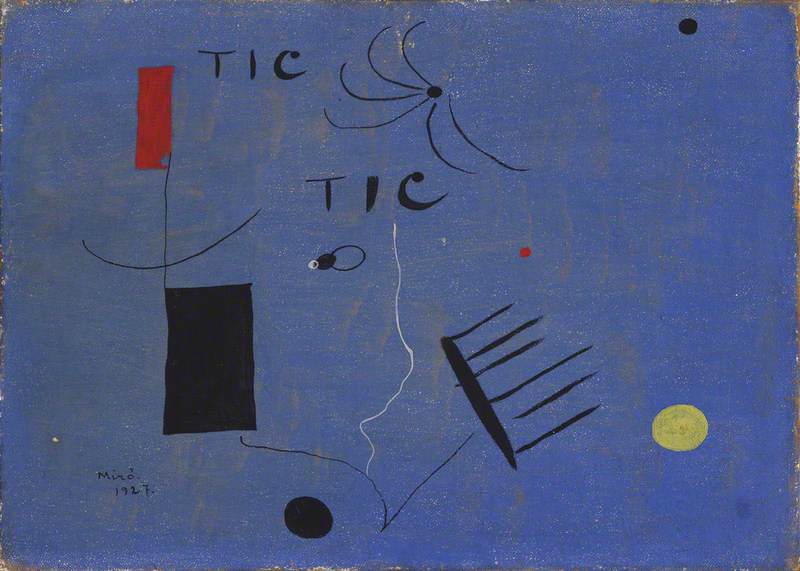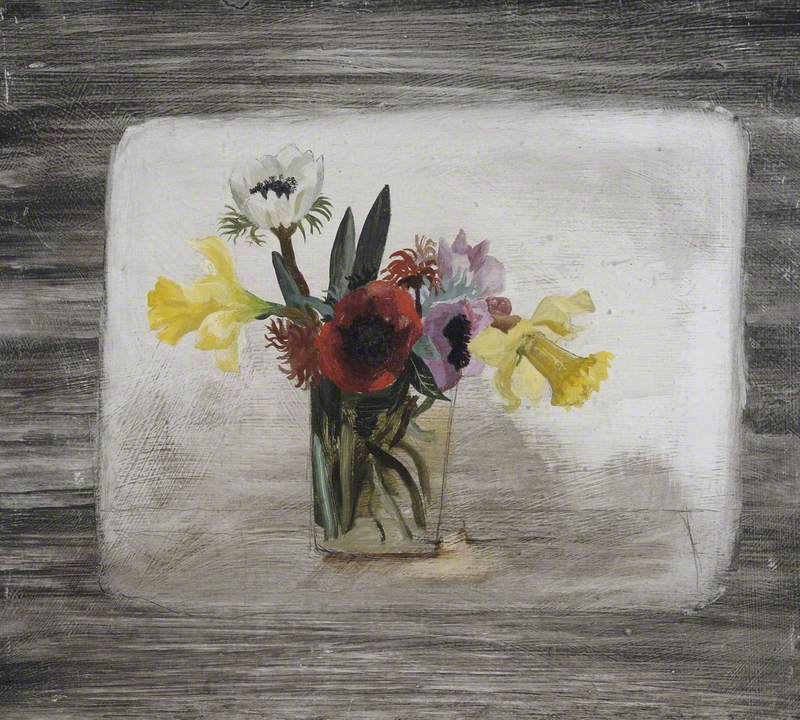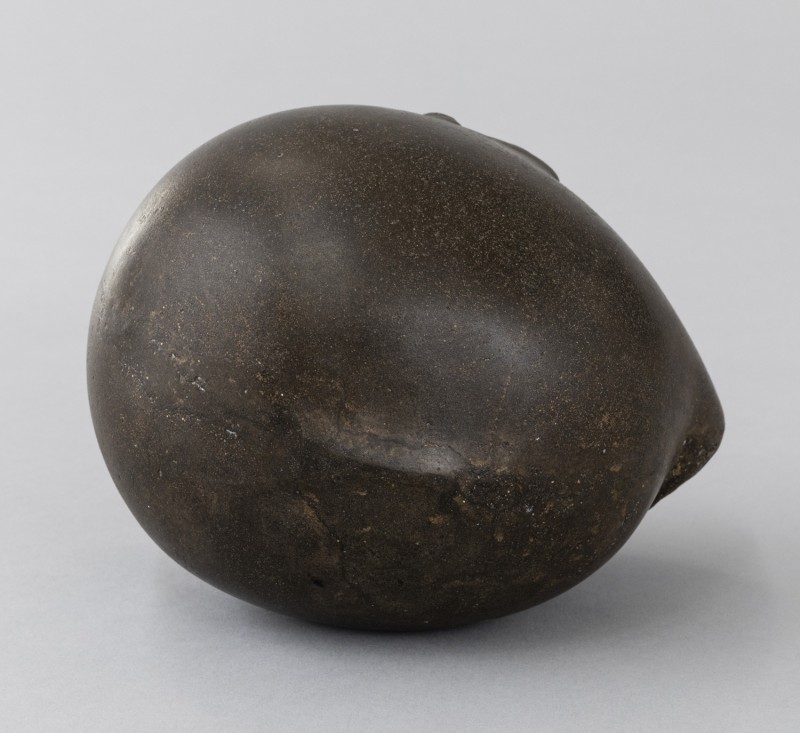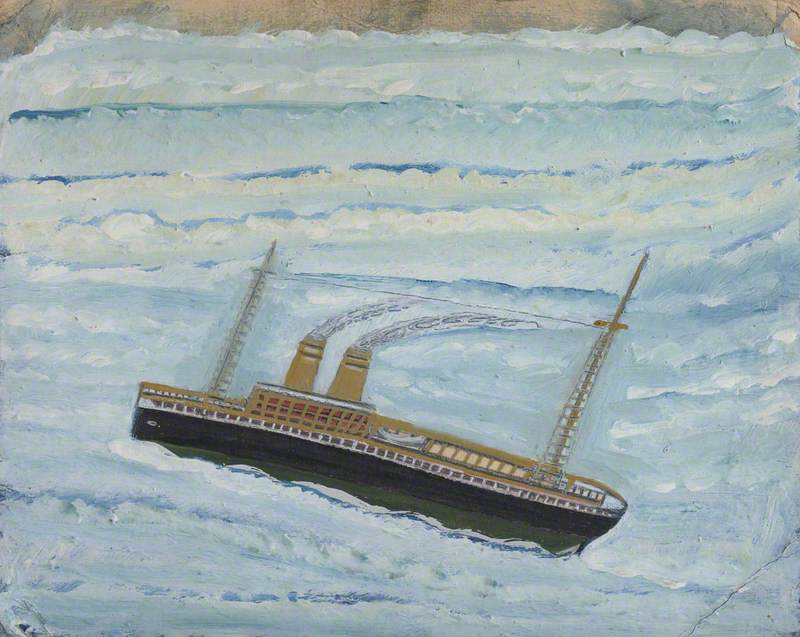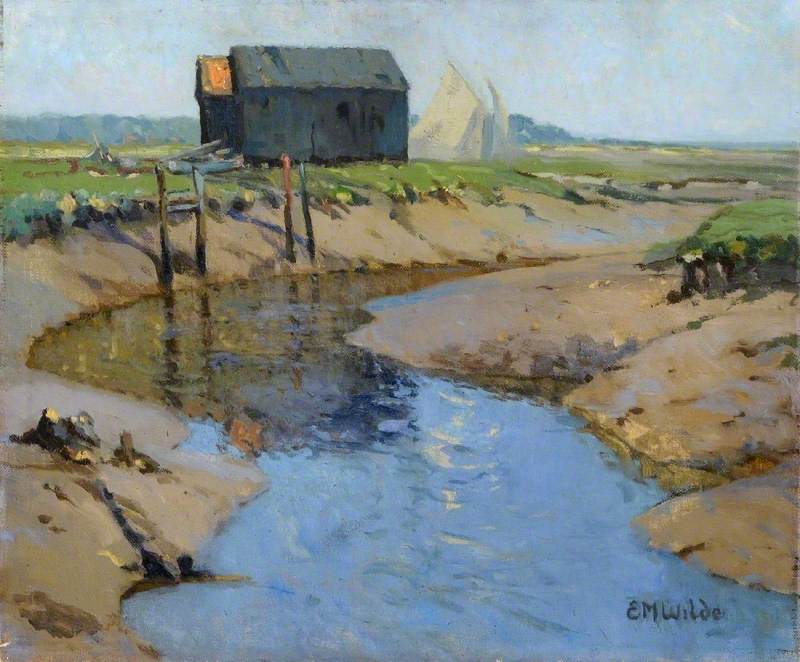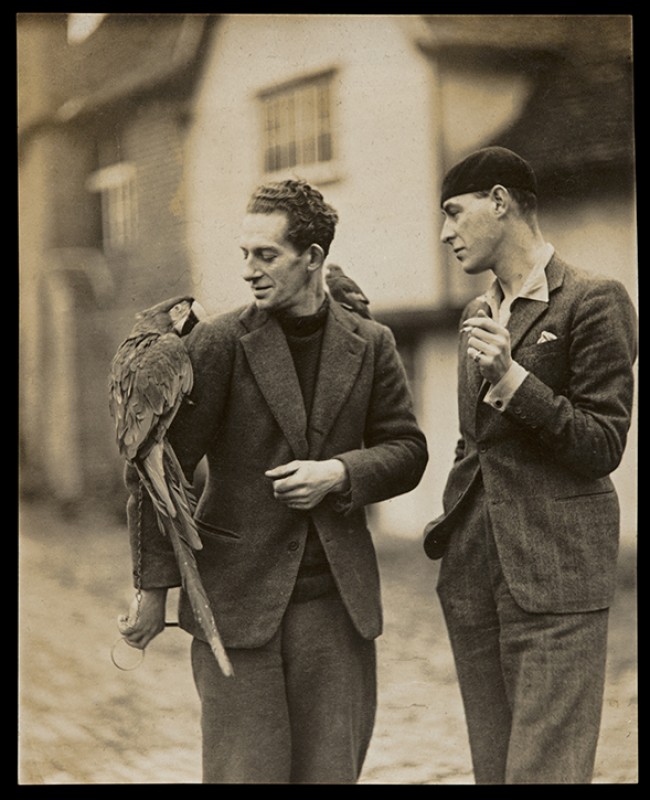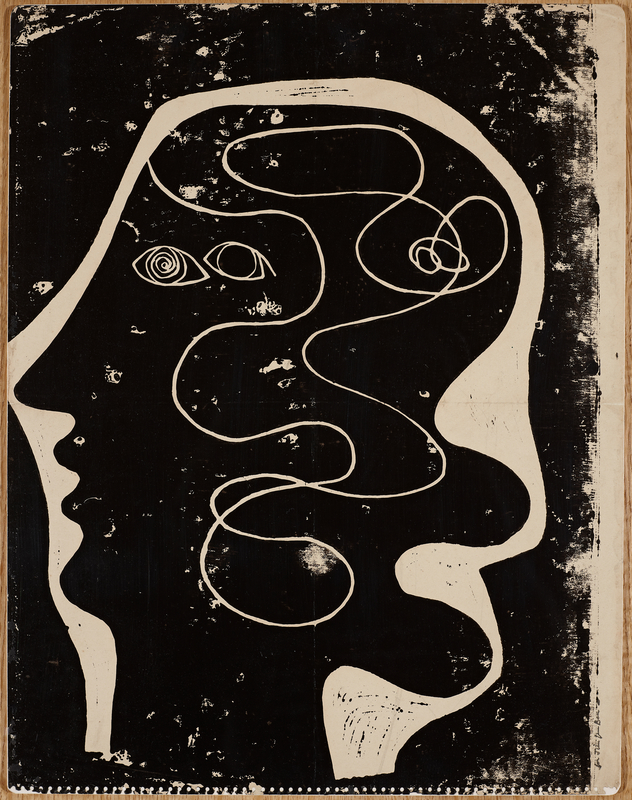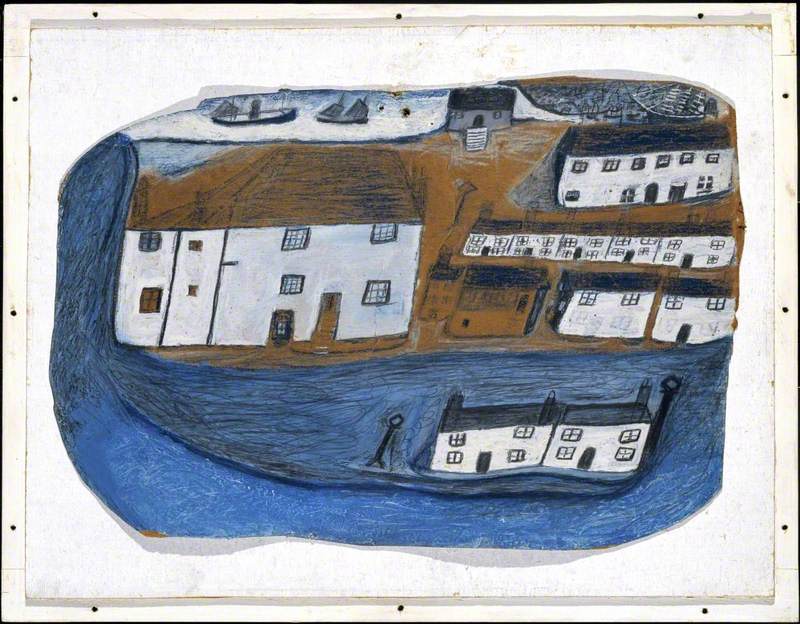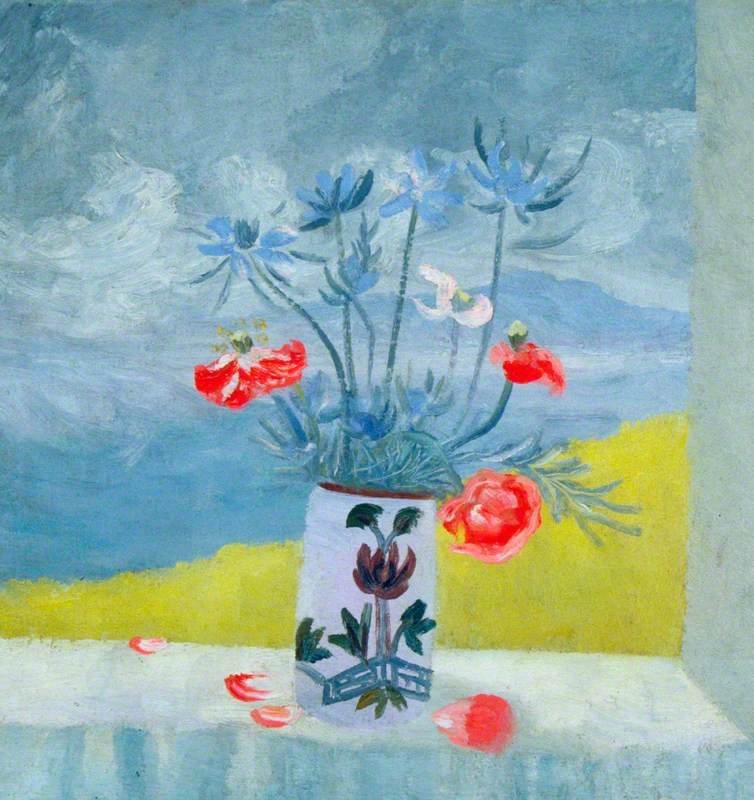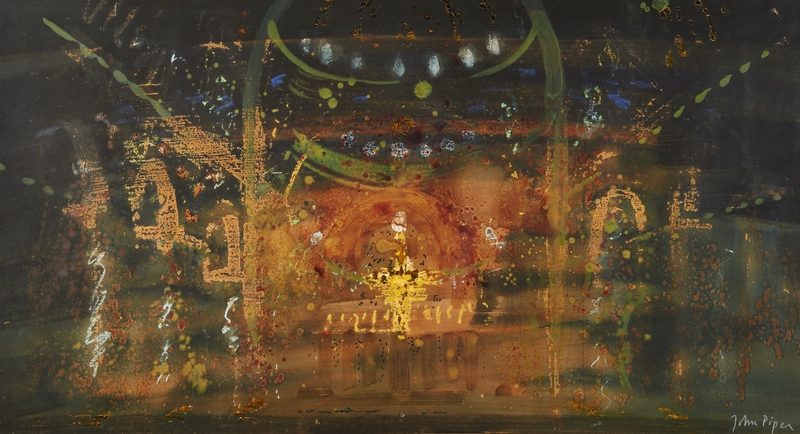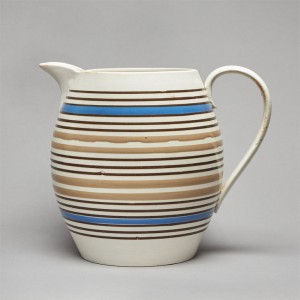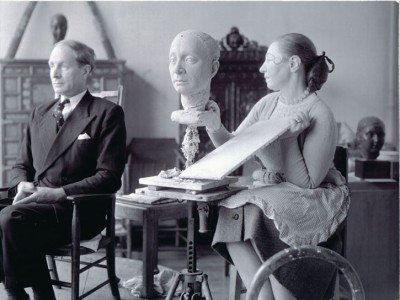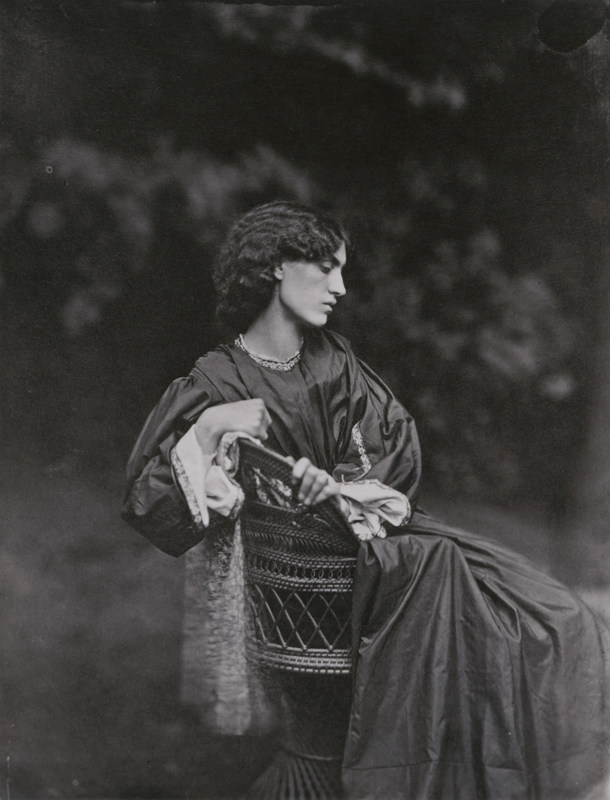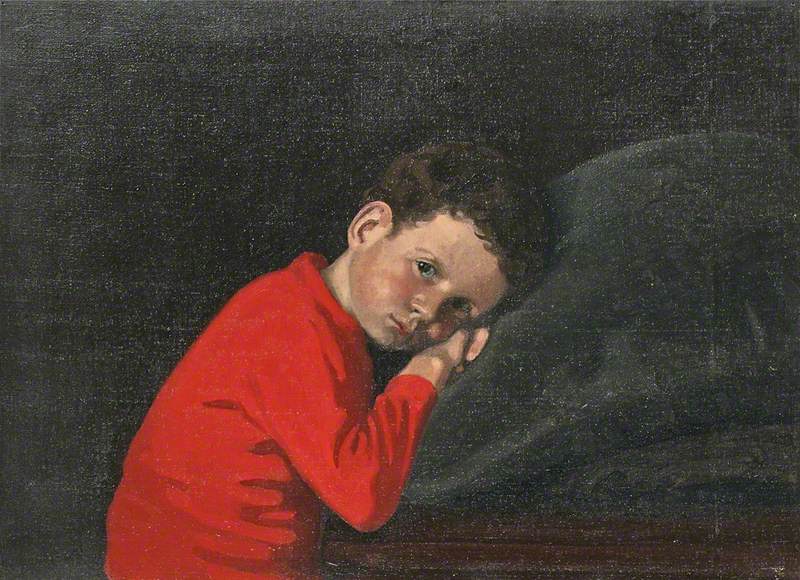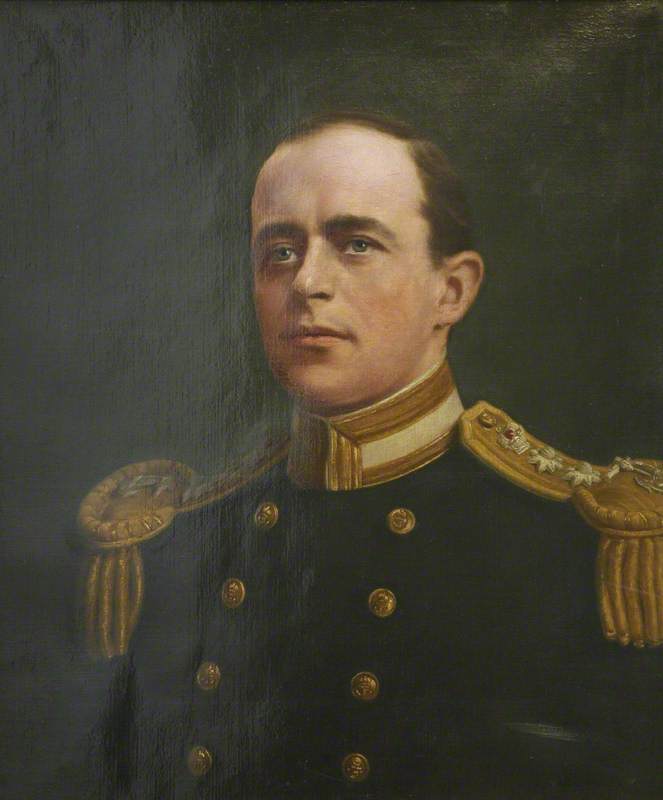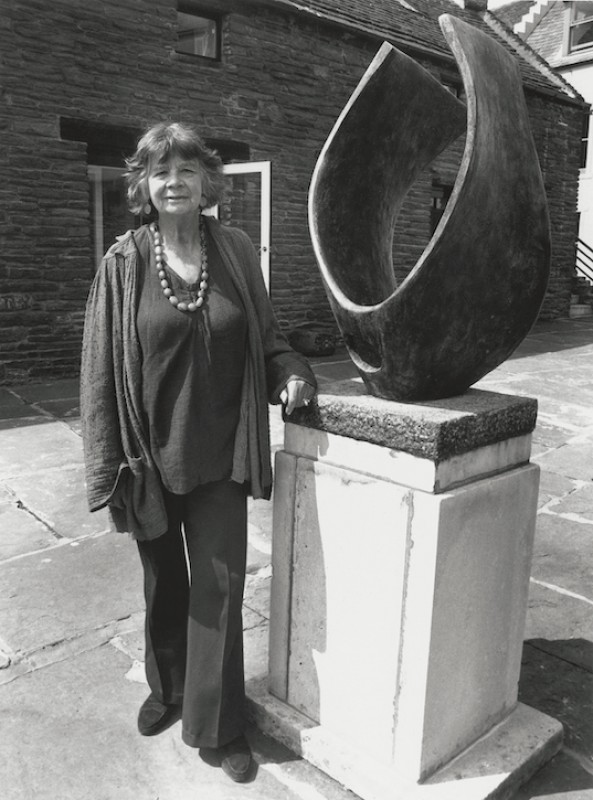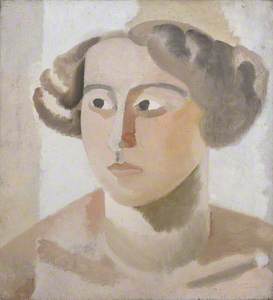'A space, an ambience, a home'. This is how Jim Ede described Kettle's Yard, the house which he and his wife Helen created from four dilapidated cottages, filled with beautiful artworks and objects, and donated to the University of Cambridge in 1966 for everyone to enjoy.
The bridge and upstairs sitting room at Kettle's Yard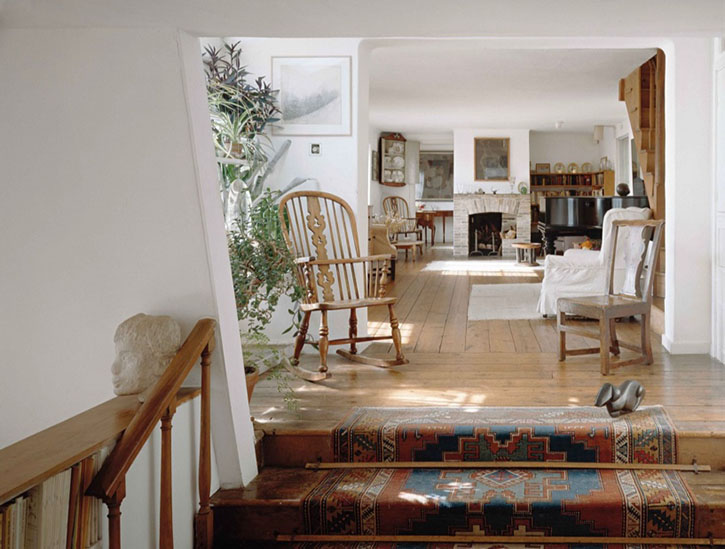
Founded in 1957, today the Kettle's Yard house is almost exactly the same as Jim and Helen Ede left it when they retired to Edinburgh in 1973. It features artworks by over 100 artists, including Barbara Hepworth, Henry Moore and Naum Gabo, many of whom the Edes knew personally and supported.
Downstairs dining room at Kettle's Yard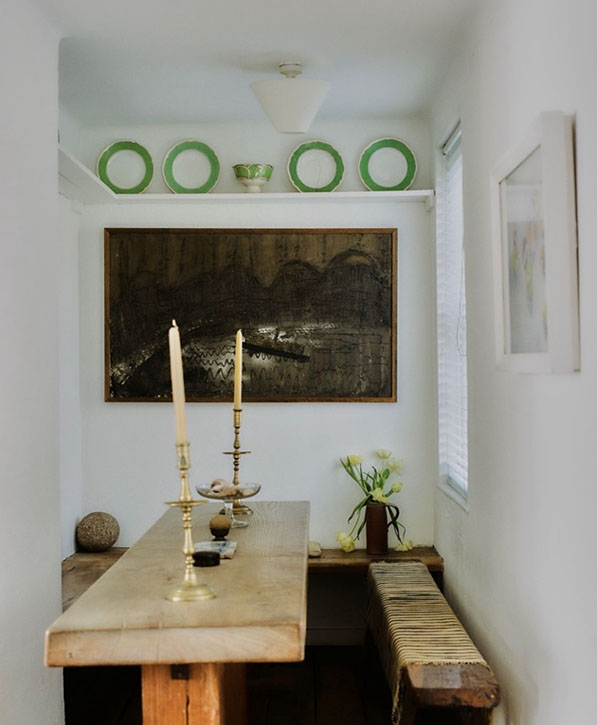
Just as important as the artworks are the ceramics, textiles, glassware, furniture and natural objects, all of which are harmoniously placed to create visual connections and correspondences. The play of light on the objects and architecture was a key element of the Edes' aesthetic vision.
Downstairs sitting room at Kettle's Yard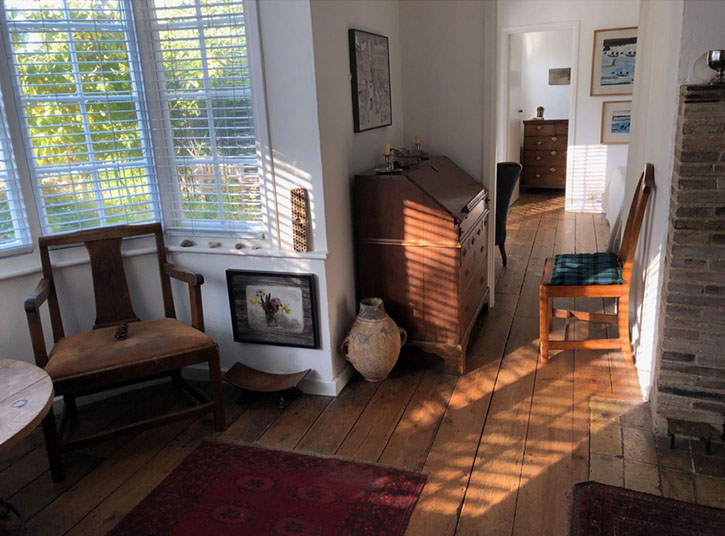
Jim and Helen Ede met in 1913 as students at the Edinburgh College of Art and married in 1921 at the Chelsea Register Office in London. In 1925 they moved to a large house in Hampstead, where they kept an open house on Sunday afternoons, hosting lively get-togethers with artists, musicians, politicians and aristocrats.
Jim and Helen Ede in Tangier, 1937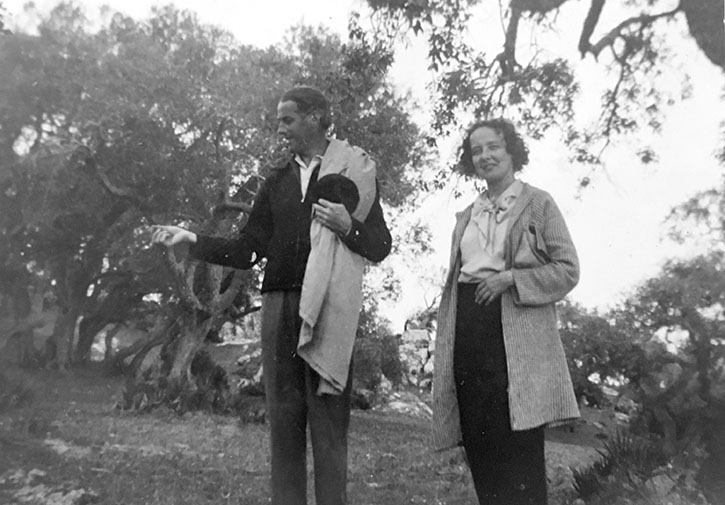
During this time they befriended the young artist-couple Ben and Winifred Nicholson, whom Jim Ede later credited with giving him the inspiration for Kettle's Yard.
Road along the Roman Wall
1926
Winifred Nicholson (1893–1981) 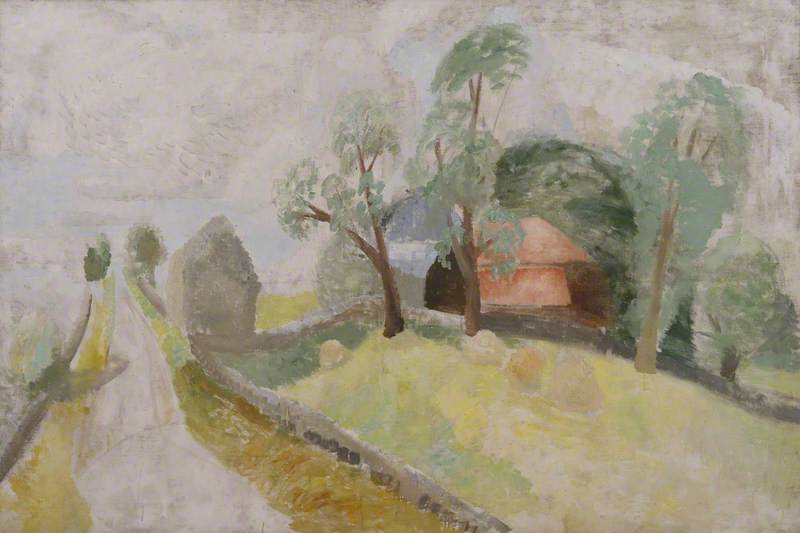
He wrote: 'Winifred Nicholson taught me much about the fusing of art and daily living, and Ben that traffic in Piccadilly had the rhythm of a ballet and a game of tennis the perfection of an old master.' In the Kettle's Yard house, there are many examples of both artists' work.
Through his friendship with the Nicholsons and his work as a curator at Tate, Jim Ede came to know other young British artists, including Christopher Wood and David Jones. On trips to Paris he encountered key figures of the international avant-garde including Pablo Picasso, Joan Miró and Constantin Brânçusi. Works by these artists are placed with very deliberate effect in the Kettle's Yard house.
Miró's Tic Tic (1927) is one of the first artworks visitors encounter as they enter the house, hung in the small room which Jim Ede used as his study, sitting and dining room. When showing Cambridge undergraduates around the house he would use the painting as a lesson in balance, covering individual elements of the painting with his finger and demonstrating how this radically transformed the whole composition.
Lemon on a pewter dish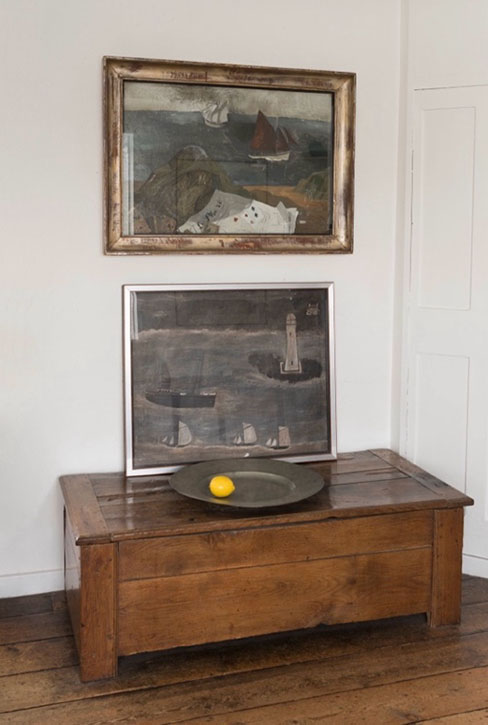
Close to Miró's painting is a low wooden chest with a pewter dish and a single lemon on top. The lemon was intended to echo the yellow dot in Miró's painting, as well as the yellow daffodils in Christopher Wood's painting Flowers (1930) which hangs nearby. Integral to the balance and harmony of the room, the lemon continues to be replenished by Kettle's Yard staff today.
Also resting on a reflective surface is Brânçusi's Prometheus (1912), an abstracted sculpture of a boy's head, displayed on a Bechstein piano in the sitting room on the floor above. Mirrored on the black lid of the piano, the sculpture appears to be floating, creating a tension between lightness and weight. The Bechstein was played by Helen Ede, who was an accomplished musician and brought music to Kettle's Yard through regular concerts, a tradition which continues to this day.
In particular moments during the year, the light flooding through the window creates a rainbow effect above Brânçusi's sculpture. Similarly, Henri Gaudier-Brzeska's Dancer (1913) creates a distinctive shadow when the sun sets each day.
Dancer room at Kettle's Yard
The French artist Gaudier-Brzeska tragically died while fighting in the First World War, aged just 23, and his extensive artistic output ended up in the possession of the British Treasury. When the Tate refused to acquire it, Jim Ede bought Gaudier-Brzeska's entire estate and zealously promoted the artist's legacy for the rest of his life. In 1931, he published the book Savage Messiah, based on the ardent correspondence between Gaudier-Brzeska and his companion Sophie.
Self-Portrait with a Pipe (1)
1913
Henri Gaudier-Brzeska (1891–1915) 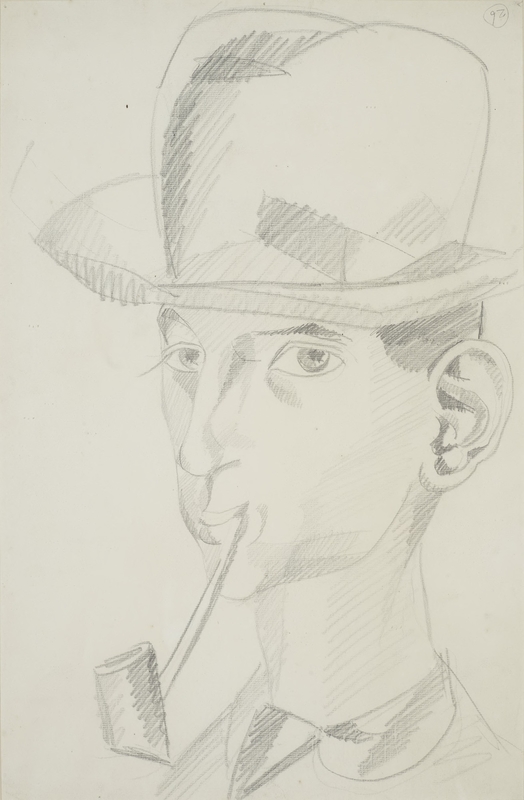
The same year that Jim Ede encountered Gaudier-Brzeska's work, he also came to know the St Ives fisherman-turned-painter, Alfred Wallis. Wallis would send bundles of his paintings to the Edes in the post, sometimes as many as 60 at a time, from which they would choose their favourite.
With no formal artistic training, Wallis turned to painting at the age of 70 after the death of his wife. He painted on any surface he could find and his small house was covered with paintings nailed to the walls. There is a whole corridor at Kettle's Yard dedicated to Wallis's work and a couple of his paintings hang above Jim Ede's bed.
Jim Ede's bedroom
Also near his bed is a low Moroccan table, which the Edes bought while living in Tangier between 1936 and 1952. On the table are 76 perfectly round limestone pebbles placed in the shape of a spiral, which has become one of the best-known features of Kettle's Yard. In his book, A Way of Life (1984), Jim Ede wrote: 'It is salutary that in a world rocked by greed, misunderstanding and fear, with the imminence of collapse into unbelievable horrors, it is still possible and justifiable to find important the exact placement of two pebbles.'
Spiral of pebbles, c.1958
For the Edes, Kettle's Yard was a sanctuary, a refuge and a place rich with spirituality. During their time at Kettle's Yard, Jim Ede was baptised and confirmed into the Anglican Church but he was also influenced by Asian and Middle Eastern belief systems. The Edes' religious faith and love of the natural world is reflected in the sculpture St Edmund (1975).
John Catto, 'St Edmund (found object)', 1975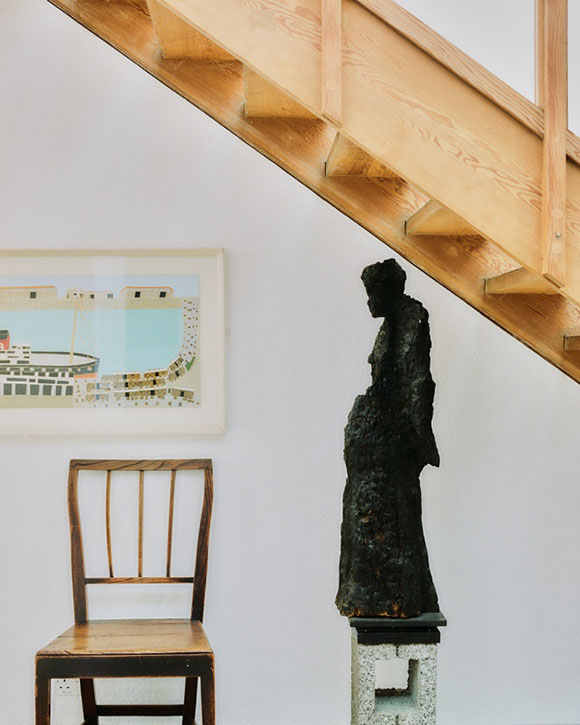
One of the last works you see on a visit to the Kettle's Yard house, the sculpture is the burnt branch of a lightning-struck willow, discovered by Jim Ede's friend John Catto on the banks of the River Cam. Catto gave it to the Edes, naming the piece St Edmund because of its human-like appearance and resemblance to medieval sculptures of the saint.
Extension upstairs at Kettle's Yard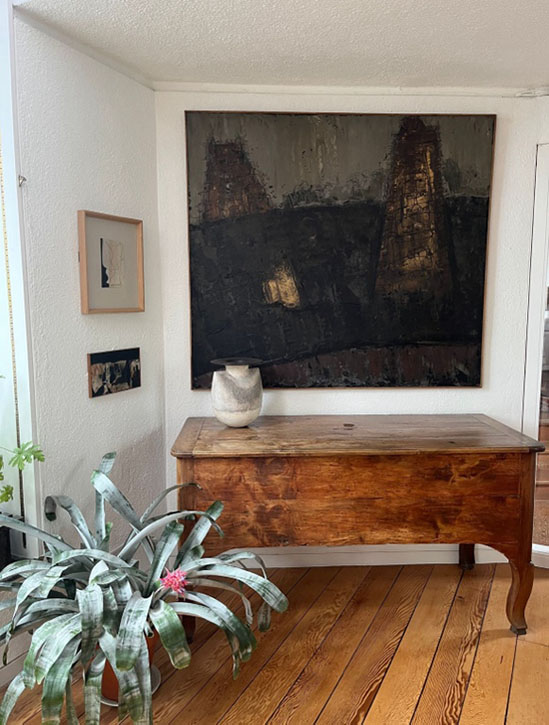
Today, Kettle's Yard is a vibrant art centre in the heart of Cambridge. As well as preserving the house as the Edes created it, the gallery hosts three exhibitions a year on a range of modern and contemporary artists, alongside a dynamic programme of events, learning activities and music concerts.
Extension downstairs at Kettle's Yard
This year, Kettle's Yard has launched a profile on the Bloomberg Connects app, a free digital guide where you can explore content from diverse cultural organisations. The Kettle's Yard profile includes special material from the archive, a guided tour of the house, highlights from the collection and audio and video recordings with staff, past and present, curators and artists.
The guide gives an insight into the story of Jim and Helen Ede – lifelong supporters of artists and visionary founders of Kettle's Yard. We hope you enjoy exploring it!
Naomi Polonsky, Assistant Curator, House & Collection at Kettle's Yard

